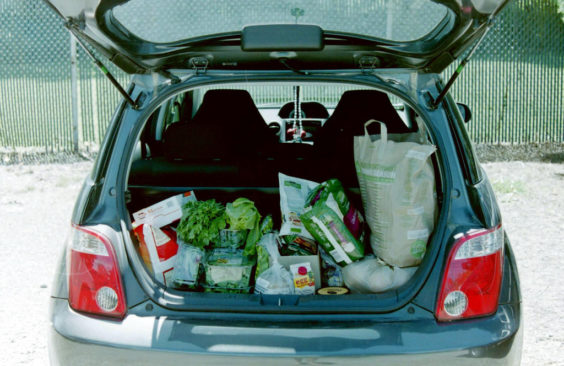
We’ll drive out of our way to get clothing, home furnishings or a haircut. But to get our groceries – we’ll sometimes settle for whatever store is most convenient.
So hope you live near a good one!
That’s according to “The Impact of Retail Proximity on Consumer Purchases,” a new survey by the discount network Access Development.
It found that more than 90% of shoppers are willing to travel no more than 20 minutes from home to make routine purchases. For more frequent purchases, that distance shrinks to 10 minutes. And for heavily-shopped categories, the preferred distance gets even shorter.
Groceries are second only to gas, in the amount of time we’re willing to travel to get them. Filling up our tanks is worth a six-minute drive, while we’ll travel eight minutes tops for groceries. Compare that to the 13 minutes we’re willing to drive to get a haircut, 14 minutes to buy home furnishings, and 20 minutes to buy clothes.
Gas is pretty much the same wherever you go, so it makes sense that we’d stop at the gas station that’s closest to home instead of going out of our way to visit a particular one. Clothing, in comparison, is not a frequent purchase. So when we need clothes, we’re more likely to drive further to get to a favorite store.
When it comes to groceries, though, are we really willing to settle for whatever store happens to be closest, regardless of the prices, the selection, or the shopping experience?
What if your nearest grocery store is overpriced? Or a dump?
A report released last year found that we’re a little more willing to travel further, if we’re not happy with our nearest option. A USDA survey found that shoppers’ nearest grocery store is an average of about two miles away from home – but the average distance they travel to buy groceries is nearly four miles. “Store proximity may be important, but clearly other store attributes — such as price, quality, and selection — affect where households do their primary food shopping,” the researchers concluded.
At the same time, a survey conducted earlier this year found that shoppers were willing to make some compromises for the sake of convenience. That survey, by the Integer Group and M/A/R/C Research, found that 35% named “location” as one of the top factors they consider when doing their grocery shopping. More than a third said they will pay more for groceries if it makes their lives easier, with more than half just wanting to “get in and out as quickly as possible”.
“More than price, quality, service, brand reputation, etc.,” the Access Development researchers found, “when it comes to everyday consumer purchases necessary to sustain our life and lifestyle, proximity is often the essential consideration involved in a consumer’s decision to patronize a merchant.”
More grocery stores have been adding click-and-collect capabilities lately, allowing you to place an order at home and have it brought to you when you arrive. So convenience can be about more than just distance – you might be willing to drive further for your groceries, if you know you don’t have to get out of your car when you get there.
But the ultimate convenience, the Integer report suggested, may be not having to drive anywhere at all, and having your groceries delivered to your door. “In this age of Amazon Prime, maybe the best trip type is the trip you don’t have to make,” the researchers noted.
So hope you don’t have to travel far to get to your favorite grocery store. Otherwise, at the rate things are going, your neighborhood store may find that you’ve decided to have your groceries come to you instead.










